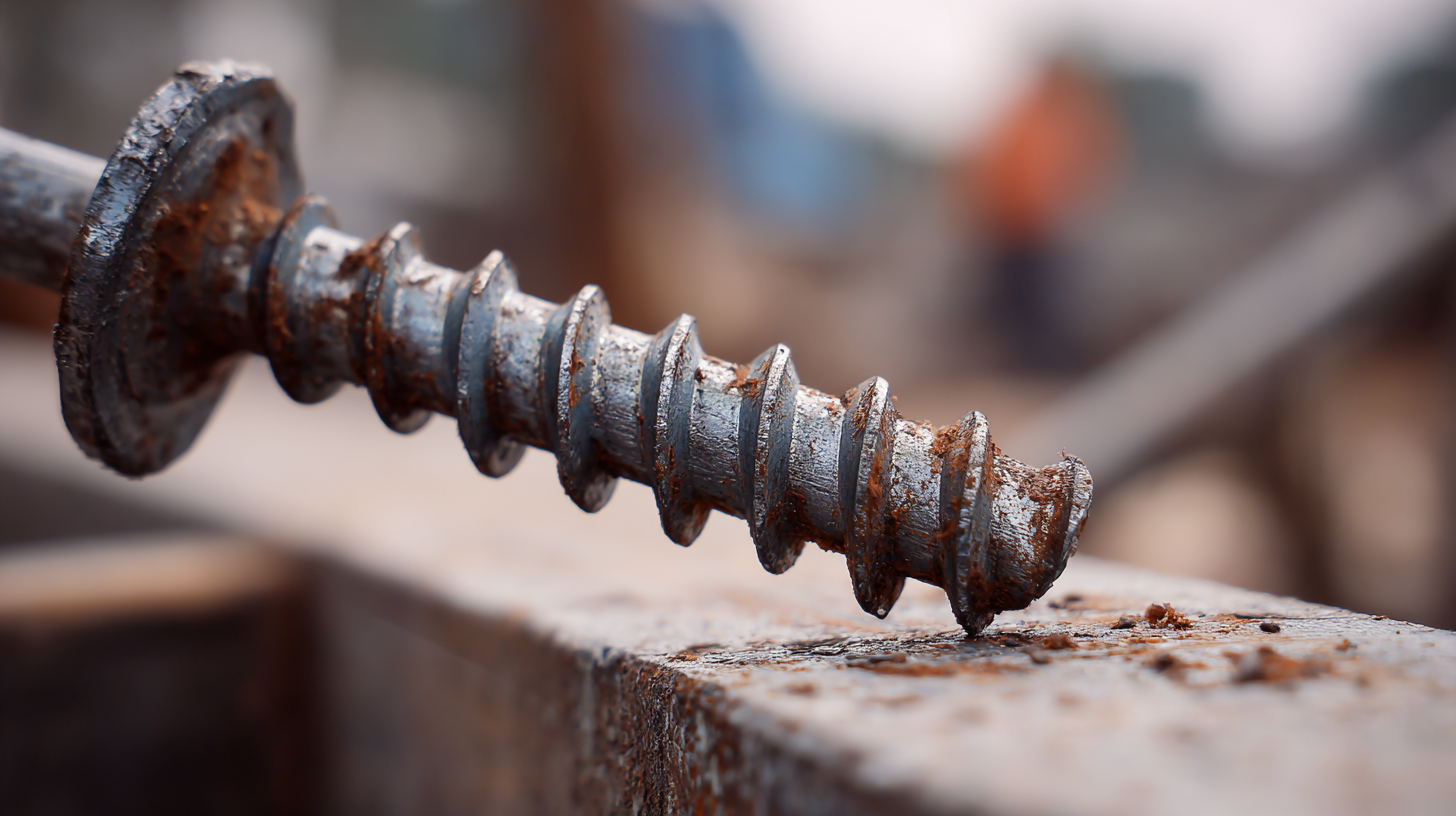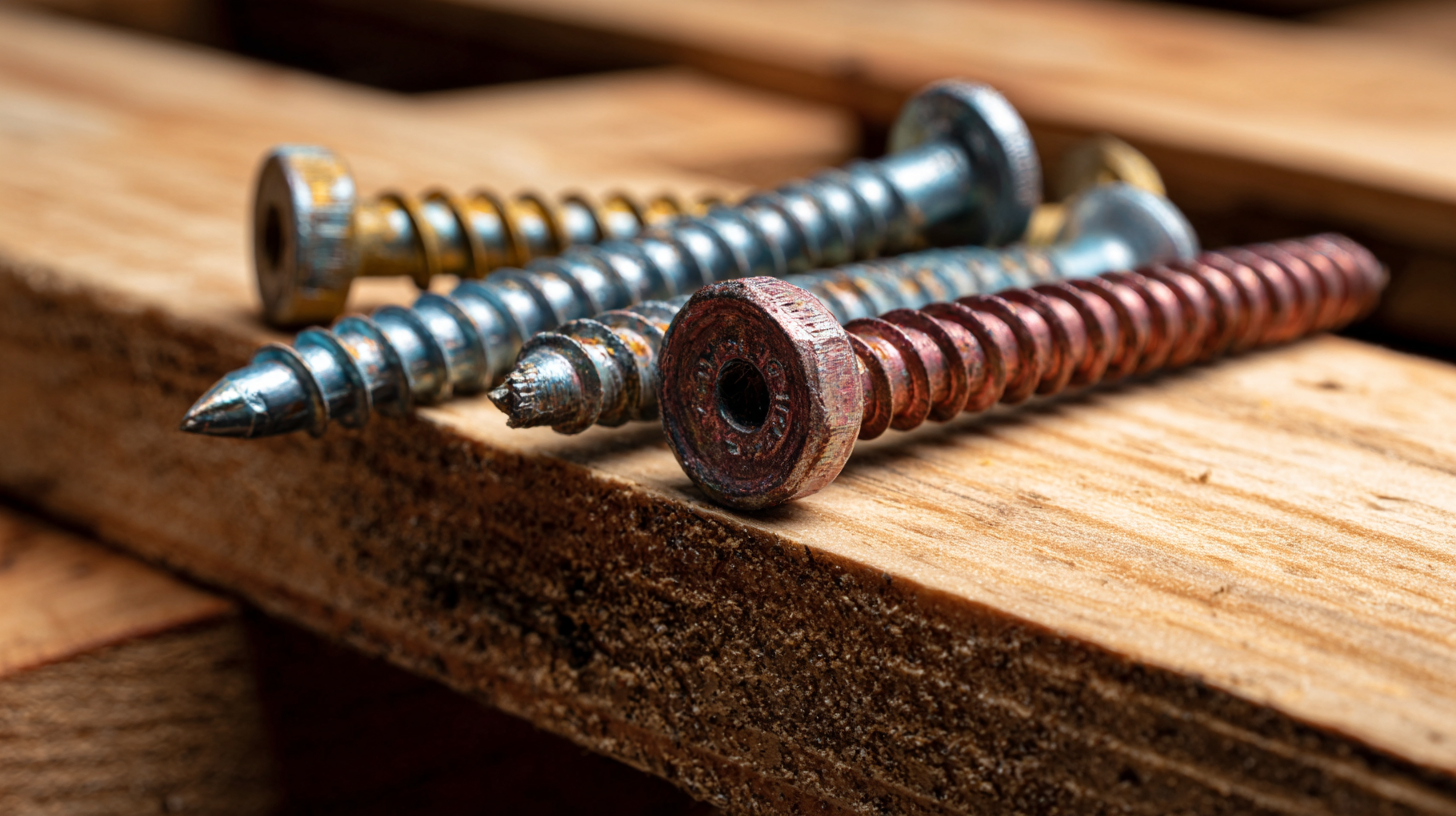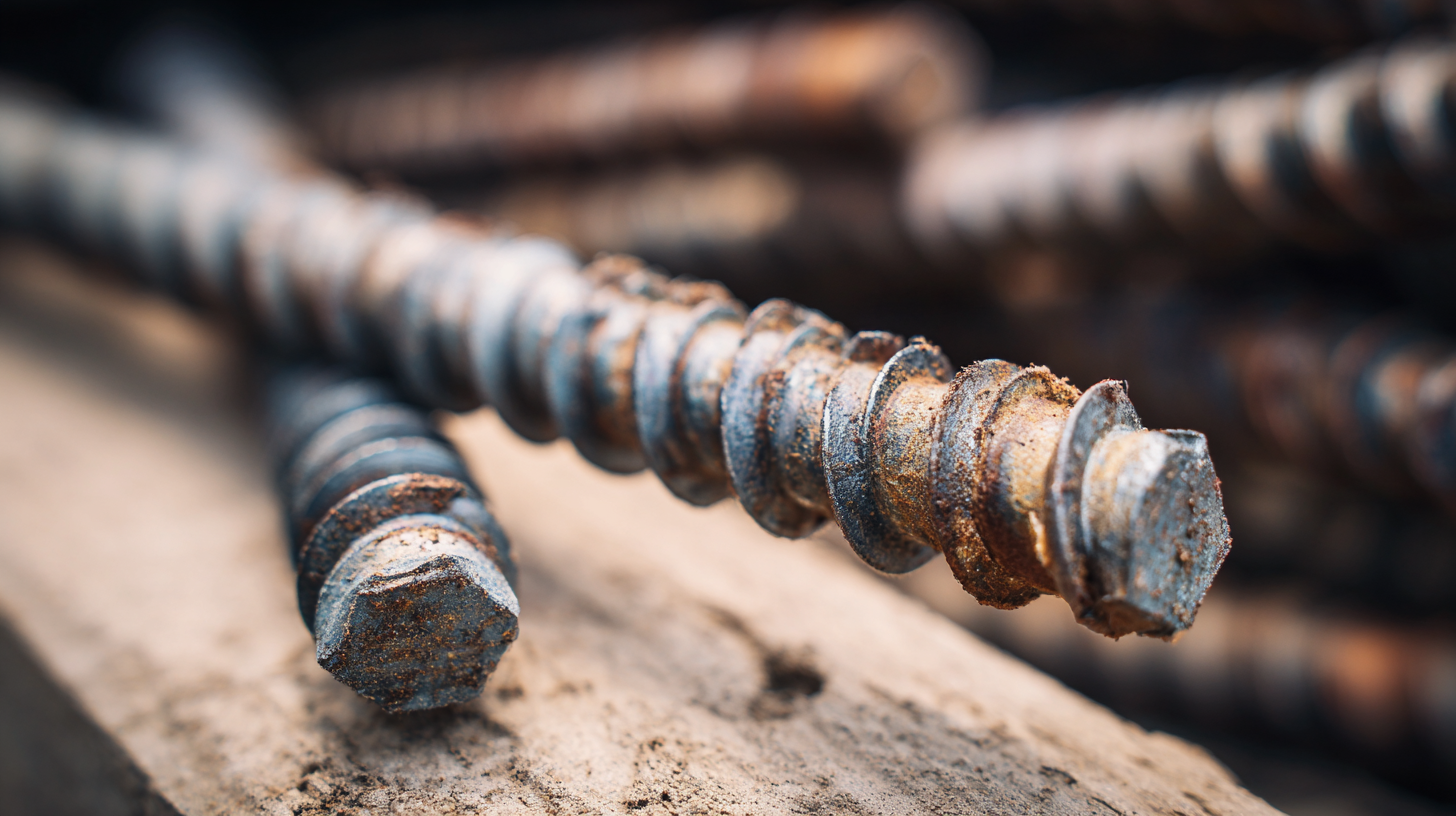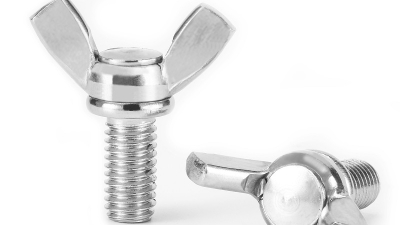
- wzqb@qb-inds.com
- Mon - Sat at 7:00AM to 6:00PM
7 Essential Benefits of Using Lag Screws in Your Construction Projects
Table of Contents
- Understanding Lag Screws: What They Are and How They Work
- Superior Strength and Load-Bearing Capacity of Lag Screws
- Corrosion Resistance: Why Material Matters in Construction
- Ease of Installation: Time-Saving Benefits of Lag Screws
- Versatility of Lag Screws in Various Construction Applications
- Cost-Effectiveness: Long-Term Savings with Lag Screws
- Exploring the Versatility and Benefits of Stainless Steel DIN316 AF Wing Bolts for Your Projects
- FAQS
- Related Posts
You know, when it comes to construction, picking the right fasteners really matters for making sure everything stays strong and durable. One fastener that people keep coming back to because you can trust it is the Lag Screw. I read a recent report from the Freedonia Group that says demand for construction fasteners like Lag Screws is expected to keep rising steadily. This’s mainly because more building projects are happening, and there's a real push to use better quality materials.
 At Wenzhou Qiangbang Industrial Co., Ltd., we totally get how important these fasteners are. Since way back in 2003, we’ve been committed to researching, developing, and making key components for high-end manufacturing. We take an all-in-one approach with R&D, production, sales, and service, so that projects can really benefit from the strength and reliability of our Lag Screws. Overall, we believe our fasteners help improve the safety and lifespan of construction works, which is pretty rewarding to be part of.
At Wenzhou Qiangbang Industrial Co., Ltd., we totally get how important these fasteners are. Since way back in 2003, we’ve been committed to researching, developing, and making key components for high-end manufacturing. We take an all-in-one approach with R&D, production, sales, and service, so that projects can really benefit from the strength and reliability of our Lag Screws. Overall, we believe our fasteners help improve the safety and lifespan of construction works, which is pretty rewarding to be part of.
Understanding Lag Screws: What They Are and How They Work
So, lag screws—also called lag bolts—are these pretty heavy-duty fasteners you’ll see a lot in construction stuff. They’ve got that thick, rough thread that helps them grip really well, whether you're working with wood, metal, or even concrete. The way they’re designed means they can handle some serious tension and shear forces, which is super important when you're talking about the structural safety of a building or a high-end manufacturing project.
Here at Wenzhou Qiangbang Industrial Co., Ltd., we’re all about quality and innovation. We've been in the game since 2003, focusing on R&D and making sure our parts meet the high standards today's industries demand. We blend research, manufacturing, sales, and customer service to make sure our lag screws perform reliably, even under tough conditions. That way, our clients can feel confident that their projects are solid. Learning how lag screws work and where to use them can really boost the strength and durability of any structure—something close to our heart as we support the growth and resilience of advanced manufacturing industries.
7 Essential Benefits of Using Lag Screws in Your Construction Projects
| Benefit | Description | Applications |
|---|---|---|
| High Strength | Lag screws provide superior holding power compared to regular screws. | Heavy timber construction, structural assemblies. |
| Ease of Use | They are easy to install with a simple wrench or socket and do not require pre-drilling in most cases. | Furniture assembly, deck building. |
| Versatility | Can be used in a wide variety of materials including wood, metal, and concrete. | Construction, equipment mounting. |
| Corrosion Resistance | Many lag screws are available with coatings that resist corrosion, making them suitable for outdoor applications. | Outdoor furniture, fencing. |
| Load Distribution | Lag screws distribute the load over a larger area, reducing the risk of wood splitting. | Joist and beam connections. |
| Adjustability | Lag screws can be easily adjusted after installation if necessary. | Renovation projects. |
| Cost-Effectiveness | They often provide better long-term value due to their strength and durability in applications. | Residential and commercial construction. |
Superior Strength and Load-Bearing Capacity of Lag Screws
When you're working on construction projects, choosing the right fasteners can really make a big difference in how strong and long-lasting the final structure turns out. One folks often swear by is lag screws—they're known for their incredible strength and ability to handle heavy loads. These screws are pretty heavy-duty, with a thick design that lets them resist a lot of weight and stress. That makes them perfect for anchoring heavy materials and giving solid support in all sorts of applications.
What’s cool about lag screws is their design—coarse threads and large heads ensure a tight grip in whatever you’re attaching them to. That means they won’t easily pull out, and you can even drive them into dense woods, brick, or metal without losing integrity. The end result? A really sturdy bond that boosts the overall stability of your build. That’s why they’re such a popular pick for both home projects and bigger commercial jobs. Whether you’re building decks, attaching beams, or putting in heavy-duty cabinets, lag screws' impressive load-bearing capabilities give builders—whether pros or DIYers—big confidence that their structures are solid as can be.
Corrosion Resistance: Why Material Matters in Construction
When it comes to selecting materials for lag screws in construction projects, corrosion resistance is actually a pretty big deal. You see, environments that are harsh or exposed to moisture can really take a toll on metal parts over time, which can lead to some pretty serious issues — like weakened structures, costly repairs, and even safety risks. I mean, did you know that, according to the National Association of Corrosion Engineers, corrosion costs the U.S. economy around $276 billion every year? That’s mind-blowing! It really underscores how important it is to pick the right materials—things like stainless steel or coated lag screws—to make sure they last and perform reliably over the long haul.

At Wenzhou Qiangbang Industrial Co., Ltd., we totally get how crucial corrosion-resistant materials are, especially in top-tier manufacturing. Since we started back in 2003, our team has poured tons of effort into R&D to craft durable components that meet, if not exceed, industry standards. We use some pretty advanced manufacturing techniques that boost the performance and lifespan of our lag screws—so you can count on them being reliable for all sorts of construction needs. By focusing on corrosion resistance, we’re not just making products that last longer—we’re also helping save on maintenance costs down the line while contributing to more sustainable construction practices.
Ease of Installation: Time-Saving Benefits of Lag Screws
Lag screws are pretty popular in construction these days, mainly because they’re super easy to install and can save a ton of time. I came across a recent report from the Fastener Industry Coalition, and it said that projects using lag screws can actually wrap up about 30% faster than those relying only on regular bolts and nuts. The reason? Well, lag screws are straightforward—they only need a quick pilot hole to go in, so there’s no messing around with complicated setups that can slow things down. It just feels less hassle overall.
Plus, they’re pretty versatile too. Whether you’re working with wood or masonry, lag screws tend to do the trick, and a study from the American Fasteners Association showed that workers actually reported cutting down about 20% of their labor hours when using them. That’s a big deal because it not only speeds up the project but also helps cut labor costs. When deadlines get tighter and budgets tighter as well, switching to lag screws really gives your team a bit of a leg up—making everything run more smoothly and efficiently.
Versatility of Lag Screws in Various Construction Applications
Lag screws are pretty popular in the construction world, and for good reason. They're super versatile and work well in all sorts of applications. These heavy-duty fasteners pack a serious punch when it comes to holding power, and they can be used with different materials—think wood, metal, or even concrete. I remember reading somewhere, maybe from the Construction Fasteners Association, that lag screws can hit torque levels higher than many other screws. That’s what makes them perfect for those high-stress jobs where safety and strength really matter.
What’s also cool is how flexible they are in design. You can find them in all sorts of lengths and diameters, so you can pretty much customize based on your project needs. Whether you're securing beams in a house or anchoring heavy equipment in a commercial setting, lag screws have got you covered. Plus, a study by the American Wood Council revealed that using lag screws in wood connections can boost the load-bearing capacity by up to 30%. That just goes to show how essential they’ve become in today’s construction scenes. All in all, lag screws aren’t just tough—they help make projects safer and more efficient, proving how adaptable they really are for all kinds of structural challenges.

Cost-Effectiveness: Long-Term Savings with Lag Screws
When you think of lag screws, they're pretty much the unsung heroes of solid construction — kind of like the backbone that keeps everything together. And honestly, they’re quite the budget-friendly option, which can save you a good chunk of change in the long run. According to the American Lumber Standard Committee, picking the right fasteners like lag screws can cut down maintenance costs by up to 30% over the life of a project. They’re known for their strong grip and ability to withstand shear forces, meaning fewer repairs and a more durable structure. This is especially important when you're building things like decks or framing where stability really matters.
On top of that, a study from the International Journal of Construction Management showed that projects using lag screws managed to cut labor costs by around 15%. Since they’re pretty straightforward to install and can handle heavier loads, it means less time running around on site — which helps speed things up and keeps productivity high. Sure, lag screws might cost a bit more upfront than some other fasteners, but the payoff is worth it: they last longer, need less maintenance, and save you money down the line. All in all, investing a little more initially can really pay off in the end, giving you more bang for your buck and peace of mind that your project will hold up over time.
Cost-Effectiveness: Long-Term Savings with Lag Screws
Exploring the Versatility and Benefits of Stainless Steel DIN316 AF Wing Bolts for Your Projects
When it comes to fasteners, the use of high-quality materials is crucial for ensuring durability, reliability, and performance in various applications. Stainless steel DIN316 AF wing bolts are designed specifically to meet these needs, offering remarkable versatility across different projects. Their unique wing shape enables easy hand operation, allowing users to tighten or loosen fastenings without the need for specialized tools. This feature makes wing bolts an excellent choice for applications requiring quick adjustments or frequent maintenance.
The DIN 316 AF standard, which governs the dimensions and specifications of these wing bolts, ensures compatibility with wing nuts, creating a secure and adjustable fastening system. According to industry reports, the demand for hand-operated fasteners like wing bolts has increased by approximately 15% over the past year, highlighting their growing popularity in sectors ranging from construction to automotive. The ease of use and the ability to manipulate these fasteners in tight or hard-to-reach spaces further contribute to their appeal, providing both efficiency and effectiveness in assembly processes.
Moreover, the corrosion-resistant properties of stainless steel enhance the longevity of DIN316 AF wing bolts, making them suitable for outdoor and marine applications where exposure to the elements is a concern. As projects increasingly demand sustainable and durable solutions, the selection of quality fasteners such as wing bolts becomes essential for maintaining mechanical integrity and performance standards. With their blend of functionality and ease of use, stainless steel DIN316 AF wing bolts are poised to remain a critical component in various engineering and construction applications.
FAQS
: Lag screws are heavy-duty fasteners that provide superior strength and exceptional load-bearing capacity, making them ideal for anchoring heavy materials and ensuring robust support in construction projects.
They feature a thick design with coarse threads and large heads, which ensures a secure grip within the connected materials, resisting pull-out forces and functioning well in dense woods, masonry, and metal.
Lag screws are preferred for various applications, including building decks, securing beams, and installing heavy cabinetry in both residential and commercial projects.
They can help reduce maintenance costs by up to 30% over a project's lifespan due to their superior holding power and resistance to shear forces, which minimizes the need for frequent repairs.
Projects utilizing lag screws can see a reduction in labor costs by approximately 15%, as their ease of installation allows for quicker turnarounds and increased productivity.
While they may have a slightly higher upfront cost compared to alternative fasteners, their durability and reduced maintenance needs make them a more economical choice in the long run.
Lag screws provide a lasting bond that enhances the stability of structures, ensuring that heavy materials are securely anchored and that the overall construction remains durable.
Their superior strength, load-bearing capacity, and economic benefits make lag screws a reliable choice, offering engineers and builders confidence in their structural decisions.
Related Posts
-

Discover the Secrets to Sourcing High Quality Screws for Your Global Projects
-

Unmatched Quality Anchors Made in China for Global Buyers
-

Exploring Global Trade Opportunities for Stainless Steel Wire at the 137th Canton Fair
-

10 Essential Tips for Choosing the Best Threaded Rod for Your Projects
-

Leading the Global Market with the Best Socket Head Cap Screws Made in China
-

Harnessing the Global Manufacturing Power of China Through Best Joist Hangers

